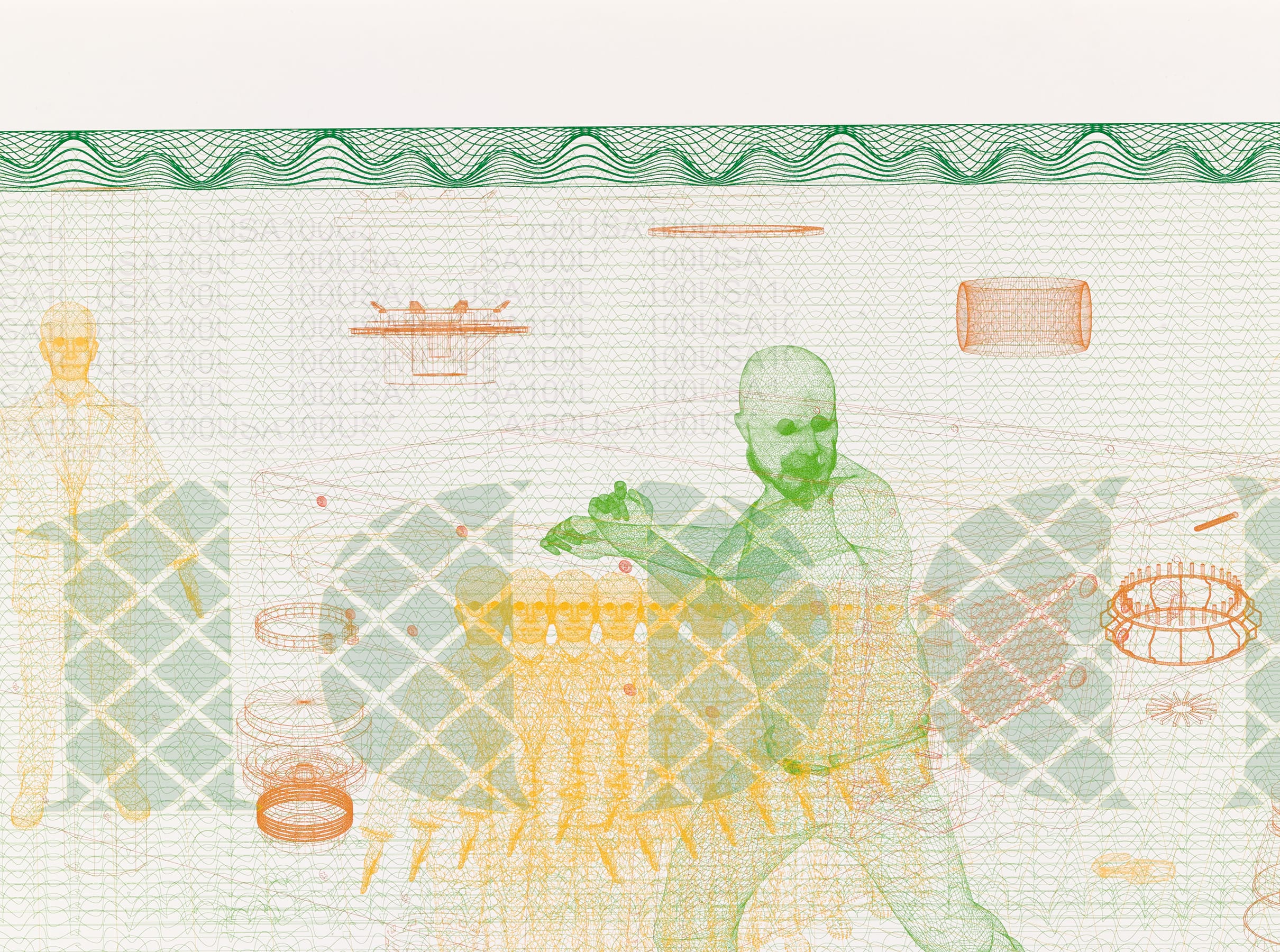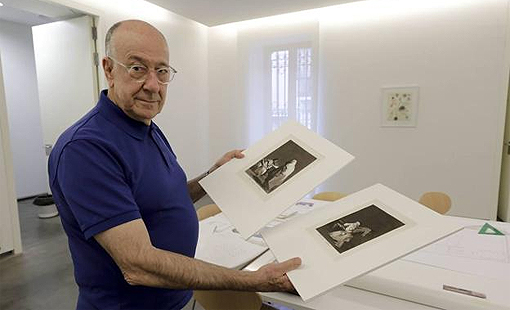
Death of José María Viñuela, an essential figure in the history of the Banco de España art collection
José María Viñuela (b. Ibahernando, Cáceres 1944 - d. Cáceres 2022) died suddenly on 10 June this year, just before the opening at the Helga de Alvear Museum![]() of the last exhibition he curated: Patterns
of the last exhibition he curated: Patterns![]() , by artist Cristina Lucas.
, by artist Cristina Lucas.
Viñuela was a key figure in the history of the Banco de España art collection. He joined the bank in 1980, first as an advisor on art matters and later as a curator. He retired in 2015. His efforts were essential for the consolidation and extension of the Bank's collection, and he prompted the acquisition of over 50 historical works, including two portraits by Francisco de Goya (of the Count of Floridablanca and the Count of Gausa), to add to the six already owned by the Bank. He also gave an essential boost to the contemporary art collection, overseeing the incorporation of over a thousand works. Viñuela's key role in the formation and promotion of the contemporary collection comes through clearly in his long conversation with current curator Yolanda Romero published in Volume Two of the Bank's Catalogue Raisonné.
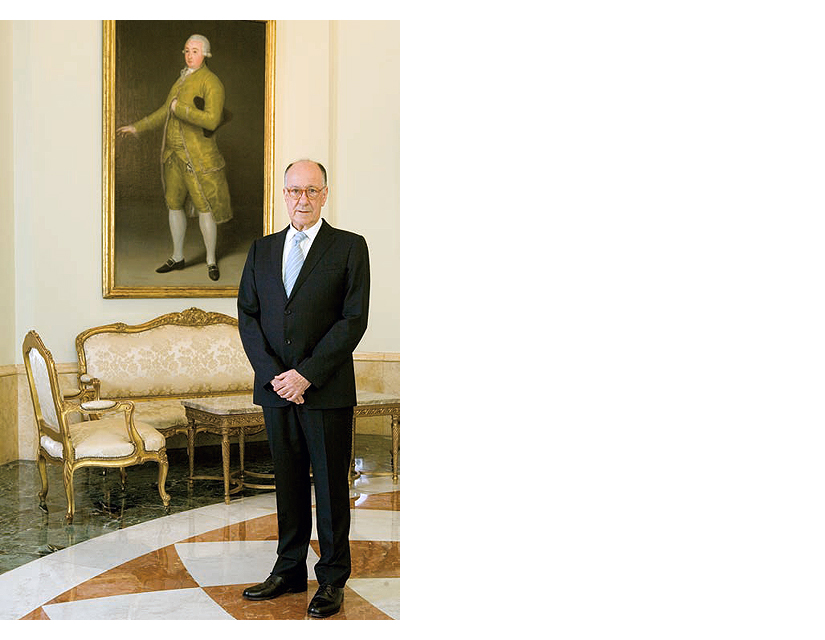 José María Viñuela standing by the portrait of Francisco de Cabarrús (c. 1788) painted by Francsico de Goya
José María Viñuela standing by the portrait of Francisco de Cabarrús (c. 1788) painted by Francsico de Goya
He trained at the Higher Technical College of Architecture of the Complutense University in Madrid and at the Hochshule für Bildende Künste in Hamburg (Germany), and began to work in the management of cultural affairs in 1978, when he was appointed Head of the Department of Exhibitions and Museography at the Madrid Municipal Museum. There, he oversaw the refurbishment of the attic spaces, which became one of the most active venues for temporary exhibitions in the city during the years of the transition to democracy. The venue hosted some of the first exhibitions organised by Viñuela, including Madrid. Testimonios de su historia hasta 1875 ['Madrid. Testimonies of History up to 1875'] and Madrid D.F.: Aspectos de la nueva escena plástica madrileña ['Madrid D.F.: Aspects of the New Plastic Arts Scene in the City'], which in time came to be seen as a benchmark exhibition. He remained in that post until he joined the Banco de España as an advisor on art matters in 1981.
He was innately talented as a curator, and had in-depth knowledge of the emerging trends in museography. He gave the Banco de España Collection great consistency and made it a benchmark for other institutions at home and abroad. He draw up the first draft guidelines for a programme of acquisitions, setting criteria that were not merely accumulative.
This helped to fill certain gaps in the historical collection (e.g. in landscape paintings) and saw additions such as the aforementioned portraits of the Count of Floridablanca and the Count of Gausa, which were of interest in organising narratives associated with the history of the Bank. He was also instrumental in establishing new lines of action and opening the door to cutting-edge Spanish art from the second half of the 20th century (the El Paso Group, Equipo 57, Equipo Crónica, Equipo Realidad) and acquiring works by painters and sculptors on the contemporary Spanish scene such as José Guerrero, Esteban Vicente, Miguel Ángel Campano, José María Sicilia, Montserrat Soto, Susana Solano and Federico Guzmán. This showed clear backing for the policy of patronage that has always characterised the Bank. This task was helped greatly by his close links to several governors of the Bank, especially Luis Ángel Rojo, with whom he worked for over 20 years, forging a relationship based on mutual trust that assured the continuity of the contemporary art collection project.
 José María Viñuela seated in front of Snow Fall II (1965) by Darío Villalba
José María Viñuela seated in front of Snow Fall II (1965) by Darío Villalba
In 1982, shortly after joining the Bank, he was charged with organising the great exhibition of the art collection planned that year to mark the bicentenary of the founding of the Banco de San Carlos. He did so brilliantly (so it is no surprise that he was appointed as curator the following year), with the inestimable assistance of a team that included Alfonso Pérez Sánchez (whom he always considered as his master), Juan Carrete Parrondo and Julián Gallego. Some of the same team also worked with him on preparing the first catalogue raisonné of the Bank's collection of paintings, which was published in 1985 and extended in 1988. From then on he split his time between management and curating. He also sat on numerous juries for architecture and plastic arts awards. Indeed, in his role as a member of the Culture Committee of the European Central Bank he was one of the team of experts responsible in the 1990s for selecting the themes and images to appear on Euro notes and coins.
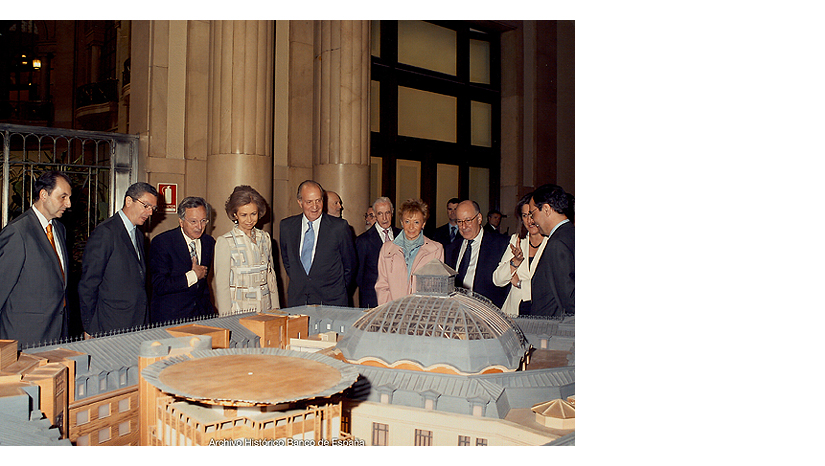 Opening of the extension to the Banco de España headquarters building (corner of Plaza Cibeles) designed by Rafael Moneo | 9 May 2006
Opening of the extension to the Banco de España headquarters building (corner of Plaza Cibeles) designed by Rafael Moneo | 9 May 2006
As a curator, he also helped to increase the Bank's architectural heritage. On the one hand, he enlisted the major architecture studios of the time for the renovation and refurbishment of some of the most iconic buildings at the Bank's headquarters on Plaza de Cibeles, such as the basilicas and the Securities Hall (designed by Tuñón and Mansilla), the dormers and the basement floor (the Paredes Pedrosa Studio) and the library (Matilde Peralta del Amo), among others. He was also largely responsible for inviting leading architects to design the new buildings erected in the 1980s and 1990s to complete the Bank's network of branch offices and the two buildings in Madrid, including Rafael Moneo (the building on the corner of Plaza de Cibeles and the office in Jaén) and José Antonio Corrales & Ramón Vázquez y Molezún (the office in Badajoz and the building at Alcalá 522). For this last building, he proposed that a set of sculptures should be purchased and erected in the entrance hall and the foyer. Those pieces now provide a magnificent chronology of the main styles of sculpture in Spain in the late 20th century. Several of them were commissioned specifically for this location, such as the impressive In Praise of Discontent (1991) by Jorge Oteiza, the last piece ever produced by the Basque sculptor, in which his friendship with Viñuela was key.
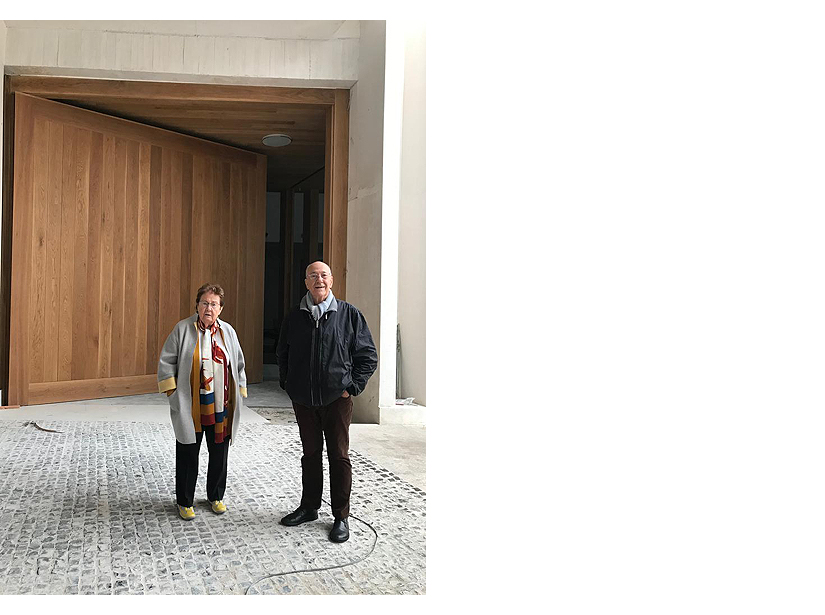 José María Viñuela with Helga de Alvear
José María Viñuela with Helga de Alvear
José María Viñuela was born in the village of Ibahernando in Cáceres, and always maintained a firm commitment to the art institutions of his native region of Extremadura. He was a promoter of Foro Sur, an Iberian/American fair of contemporary art that turned Cáceres into an essential location on the contemporary art circuit for over 10 years. He also sat on the board of patrons of the Ibero-American Museum of Contemporary Art (MEIAC) in Badajoz and of the Visual Arts Centre of the Helga de Alvear Foundation in Cáceres, which he helped found. His long, close friendship with collector and gallery owner Helga de Alvear goes a long way towards explaining why Cáceres now has a museum named after her. As an architect and an expert in the works in its collection, he played an essential role in the design and layout of the museum and in the architectural configuration of the building itself, which was designed by the Emilio Tuñón studio.
The installation of the works for the inauguration of the museum and its earliest exhibitions are proof of just how dedicated Jose María Viñuela was to this project, which took up the last few years of his working life. The most recent exhibition, featuring artist Cristina Lucas, brings together photos of the Bank's gold vault and a selection of pieces from the collection in Cáceres. It has unintentionally become a benchmark for his two great passions: the Banco de España and the Helga de Alvear Museum.
